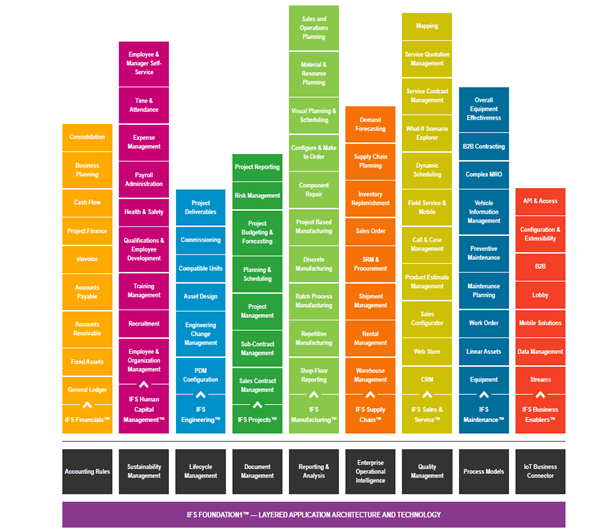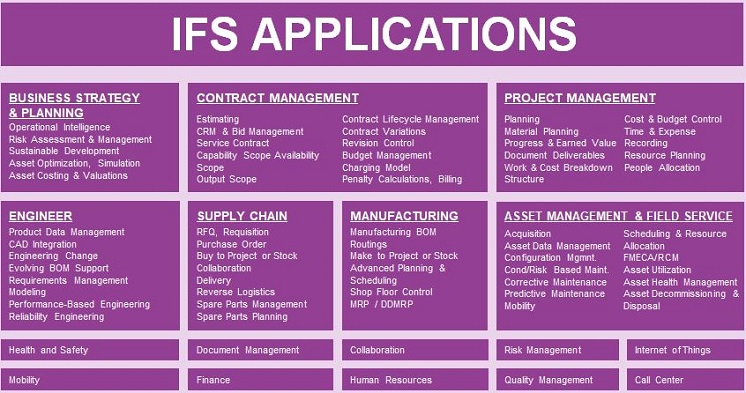Solutions
ERP
IFS ERP Applications supports 90% of Product Technology attributes. With this great coverage that outpaces the average competitor (66%), the IFS software package has a substantial advantage. IFS Applications, service oriented architecture SOA make it possible to use only the required system and the additional system can be integrated later on when needed, as follows:
- Financials
- Human Capital Management
- Projects
- Manufacturing
- Supply Chain
- Services
- Maintenance
- Quality Management
- Document Management
EAM
IFS EAM offers comprehensive functionality to support your
entire asset lifecycle, from cradle to termination. Whether
you are planning and designing your asset, operating and
maintaining it over its productive lifecycle, executing a
refit or decommissioning, IFS provides a single version of the
truth to help you maximize value over the asset lifecycle.
Managing every aspect of your asset lifecycle:
- Aircraft Maintenance & Engineering
- Maintenance, Repair & Overhaul
- Manufacturing Management
- Enterprise Asset Management
- Fleet & Asset Management
- Quality Management
FSM
IFS FSM (Field Service Management) offers tools that cover the
entire service lifecycle. The solution is available on premise
or in the cloud, and it can be configured to meet the needs of
organizations in a number of field service industries such as
medical equipment, high tech, property management,
telecommunications, Utilities and more.
Standard functionality includes:
- Customer Relationship Management (CRM)
- Scheduling
- Mobile Service
- Contract Pricing
- Warranty Repair
- Parts Management
- Reverse Logistics
Read More
“ From this benchmark comparison, we see that IFS Applications outperforms the market average 100% of the time, and may be a leading option for decision makers trying to determine which software is best suited for their functional, business, and technical needs. Of course, the decision makers within each business will have assigned different degrees of importance to the standard benchmark criteria, which are not accounted for here. Buyers are thus advised to pay close attention to their internal assessment in order to clearly identify their priorities and to understand how the software will function in their organization. ”
IFS Applications Component Architecture

